1069
Ancient technology. Who is author?
The lack of the necessary precision equipment by means of which could have created numerous ancient Egyptian artifacts, as well as the absence of traces of the industrial infrastructure for its production in Egypt and elsewhere suggest that high technology was introduced from outside. And here is not bad to remember distributed among the various peoples mythological story about the "sons of heaven", which are committed in the world a kind of humanitarian mission returned to "his star».
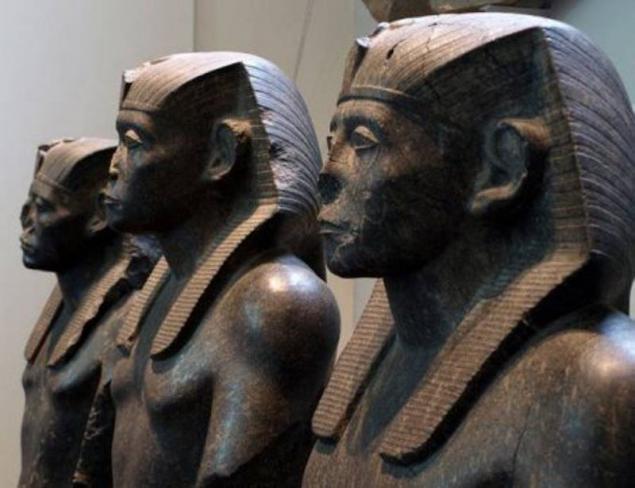
At the turn of the III millennium BC. e. Egypt virtually out of nowhere there was an unexplained technological breakthrough. As if by magic in a very short period of time the Egyptians erected the pyramid and demonstrate unprecedented skill in handling solid materials - granite, diorite, obsidian, quartz ... All these miracles happen until the iron tools and other technical equipment. Subsequently, the unique skills of the ancient Egyptians as quickly and inexplicably disappear ...
Take, for example, the story of the Egyptian sarcophagi. They are divided into two groups, which are very different in quality performance. On the one hand carelessly fabricated boxes, which are dominated by the surface roughness. On the other - polished with incredible craftsmanship multi-ton granite and quartzite container of unknown purpose. Often the quality of the treatment of these sarcophagi is at the limit of modern machine technology.
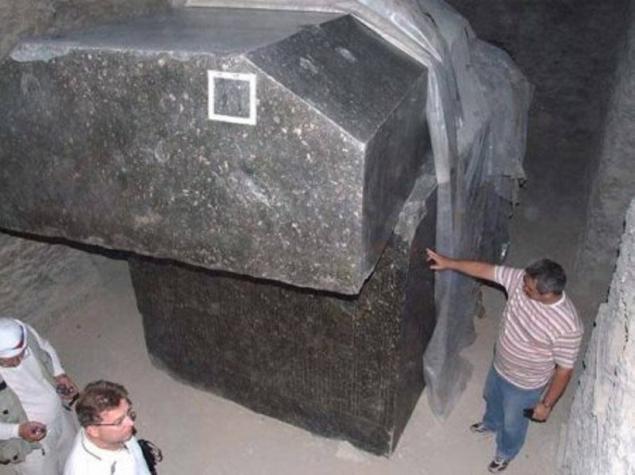
No less a riddle ancient Egyptian statues are created from heavy-duty materials. The Egyptian museum, everyone can see the statue, carved from a single piece of black diorite. The surface of the statue is polished to a mirror shine. Scientists suggest that it refers to the period of the Fourth Dynasty (2639-2506 gg. BC. E.) And depicts the Pharaoh Khafre, who is credited with the construction of one of the three largest pyramids of Giza.
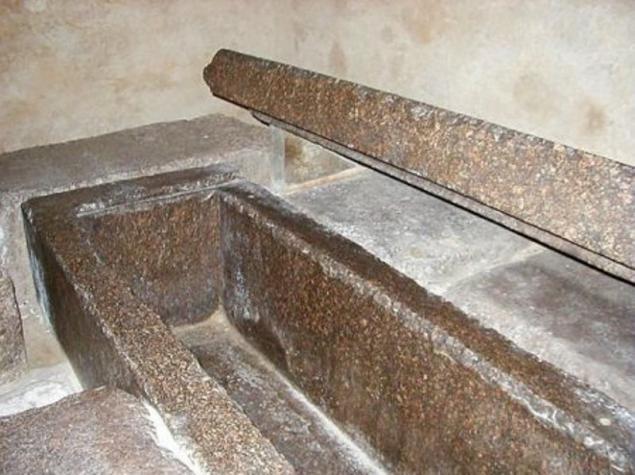
But the thing - in those days the Egyptian craftsmen used only stone and brass instruments. Soft limestone such instruments can still be processed, but the diorite, which is one of the most solid rock, well, not.
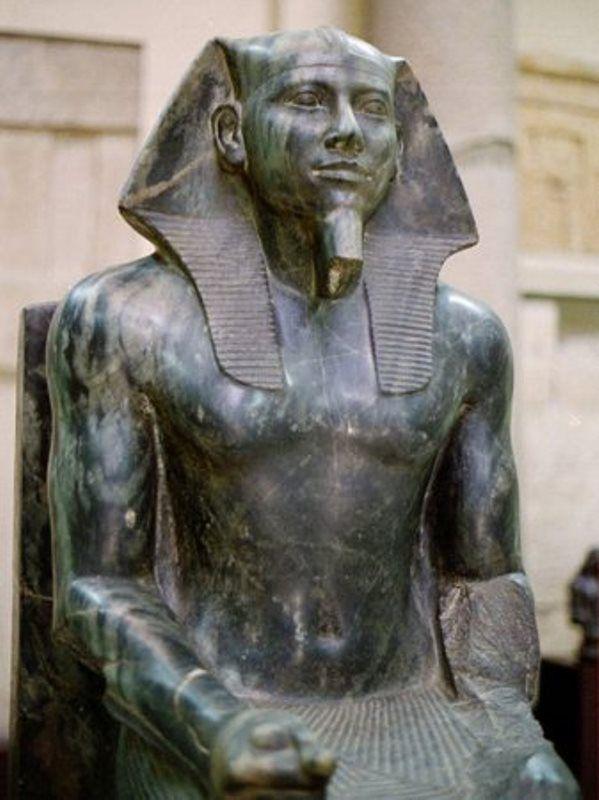
And it's flowers. And here is the Colossi of Memnon, located on the west bank of the Nile across from Luxor - this is berries. Not only that, they are made of heavy-duty quartzite, their height reaches 18 meters, and the weight of each statue is 750 tons. In addition, they are based on a quartzite pedestal 500 tons! It is clear that no arrangements for the transportation would not stand such a load. Although badly damaged statues, excellent execution survivors flat surfaces suggests the use of advanced machine technology.

But even the greatness of the colossus pales in comparison with fragments of a giant statue, resting in the courtyard of Ramesseum - the funeral temple of Ramses II. Made from a single piece of pink granite statue reaches a height of 19 meters and weighed about 1000 tons! The weight of the pedestal on which the statue once stood, was about 750 tons. Monstrous statues and the highest quality of workmanship is absolutely not fit into the known technological capabilities of the Egyptian New Kingdom period (1550-1070 gg. BC. E.), Which dates from the sculpture by modern science.
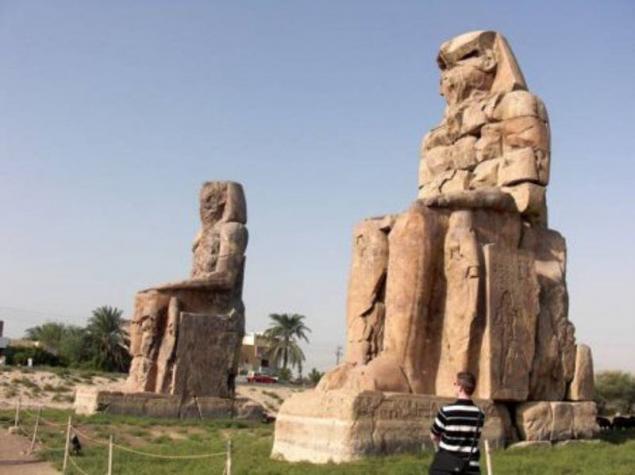
And here the Ramesseum is consistent with the technical standards of the time: the statues and temple structures are created mostly of soft limestone and construction delights do not shine.

The same picture is observed and the Colossi of Memnon, the age is determined on the balance of them located memorial temple. As in the case of the Ramesseum, the quality of buildings, to put it mildly, does not possess advanced technology - Adobe and roughly fitting limestone, that's the whole masonry.

Such incongruous neighborhood can only be explained by the fact that the Pharaohs simply parked their temple complexes of the monuments left over from a much more ancient and advanced civilization.
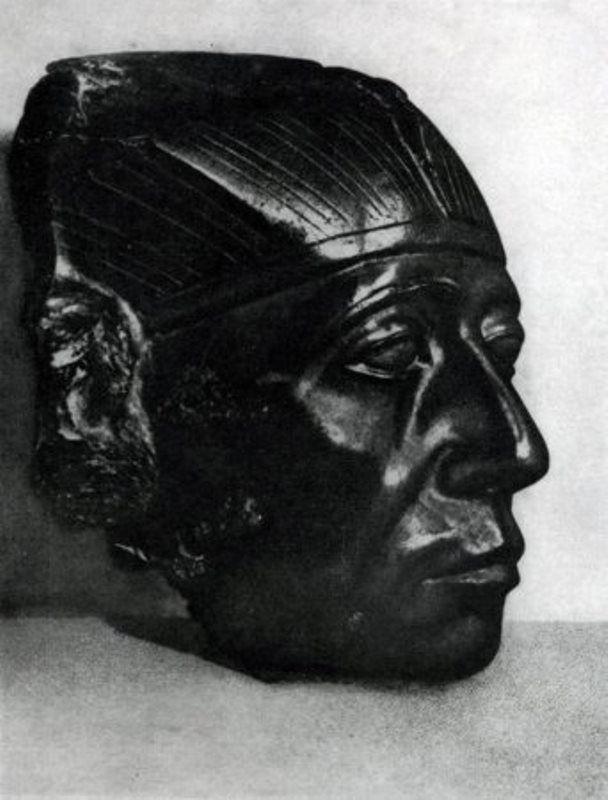
From ancient Egyptian statues linked another riddle. These are the eyes, made from pieces of rock crystal, which is inserted, usually limestone and wooden sculptures. The quality of lenses is so high that the thought of turning and grinding machines come by themselves.

Eyes wooden statues of the pharaoh Horus, like the eyes of a living person, it looks blue, then gray, depending on the angle of illumination and even mimic the capillary structure of the retina! Research Professor Jay Enoch at the University of Berkeley, has shown remarkable closeness of these glass dummy form and optical properties of the real eye.
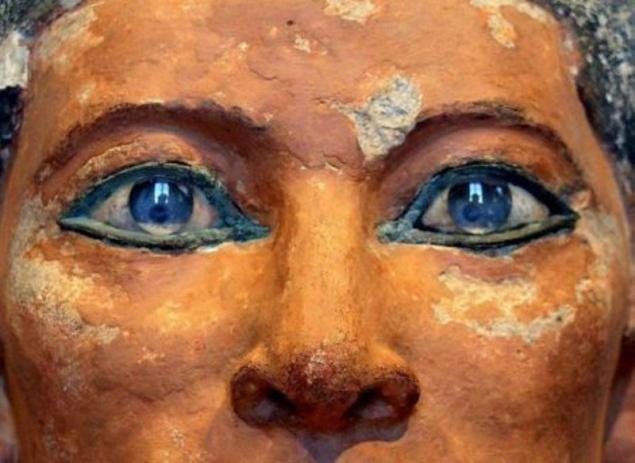

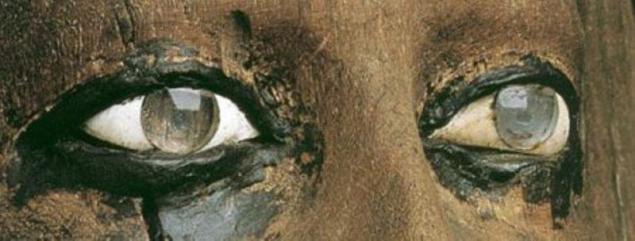
American researcher believes that the greatest skill in handling lenses to Egypt reached about 2500 BC. e. After this wonderful technology as somehow ceases to operate, and then forgotten altogether. The only reasonable explanation - quartz blanks models Eye Egyptians borrowed from somewhere, and when the stocks run out, broke off and "technology».
Looked like Gods?
The ancient Greek historian Diodorus of Sicily wrote 'with the words of the Egyptian priests that the death ruled Egypt for less than 5 millennia. Kingdom people preceded the power of gods and heroes, who ruled an incredible 18,000 years. The ancient Egyptian priest and historian Manetho also starts his list of rulers of Egypt Dynasty gods and demigods.
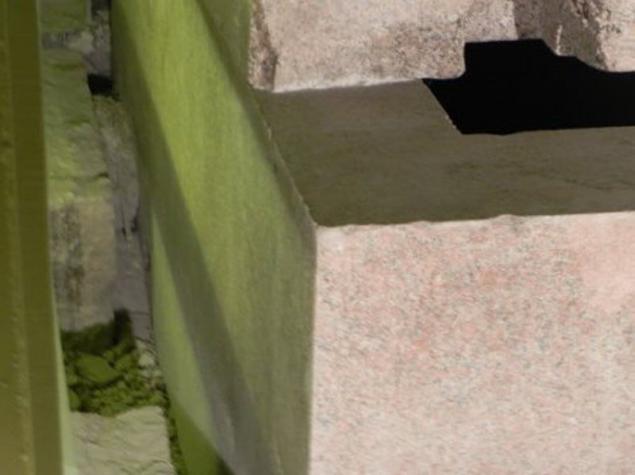
If we compare the statements of ancient authors and the facts that we have at the moment, it appears that no technological breakthrough was not. Just since the III millennium BC. e. Egypt began to surface artifacts left over from the first divine dynasty. It is possible that the pharaohs deliberately sought, tried to master and simultaneously assign the remains of this heritage.
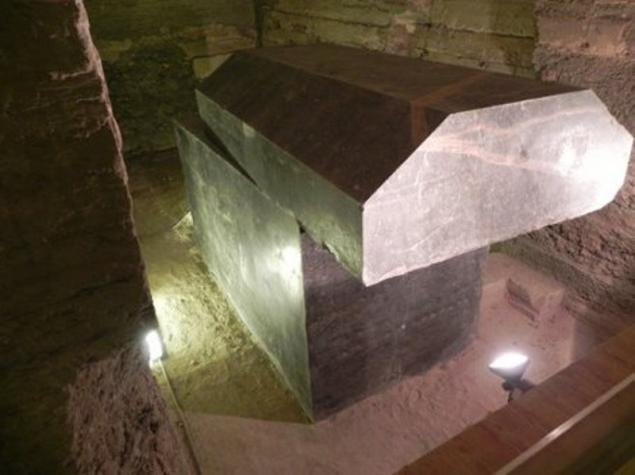
On the appearance of genuine creators of masterpieces of ancient sculptures can tell the daughters of Pharaoh Akhenaten reformer. The first thing that catches your eye - an unnaturally elongated shape of the skull, characteristic of the way, and other works of Amarna period. This phenomenon gave rise to the hypothesis of a congenital disease of the family of Pharaoh. However, no mental disabilities in the family of the ruler, which must inevitably cause a similar disease, is not mentioned anywhere.
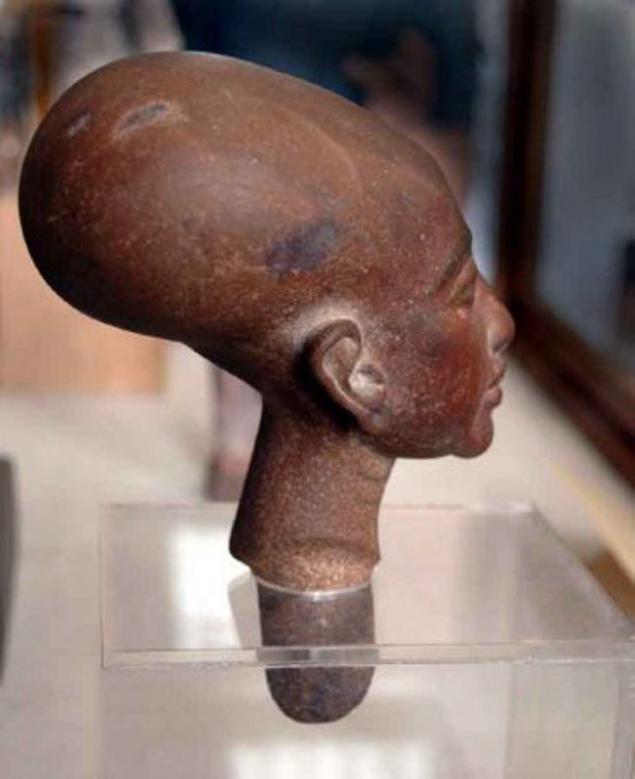
If the cops were really distant descendants of the gods, it is possible that at times they might occur "divine" genes. Does not this anatomical feature of the gods associated common practice among the various peoples of deformation of the head?

Another important and mysterious part of the canon of ancient Egyptian sculpture - the absolute symmetry of the facial proportions. It is known that in nature there is no symmetrical objects. This rule also applies to the human body. Moreover, experiments have shown that the pictures composed of strictly symmetrical halves of one and the same person, cause human instinctive rejection.

Through them something unnatural and foreign to human nature. But perhaps, in the world, came from the gods reigned other natural conditions in which "anomaly" has become the norm? Be that as it may, we must listen carefully to the words of Plutarch: "The greater blasphemy falls not the one who denies the existence of the gods, and those who recognize them as what are considered their superstitious."

At the turn of the III millennium BC. e. Egypt virtually out of nowhere there was an unexplained technological breakthrough. As if by magic in a very short period of time the Egyptians erected the pyramid and demonstrate unprecedented skill in handling solid materials - granite, diorite, obsidian, quartz ... All these miracles happen until the iron tools and other technical equipment. Subsequently, the unique skills of the ancient Egyptians as quickly and inexplicably disappear ...
Take, for example, the story of the Egyptian sarcophagi. They are divided into two groups, which are very different in quality performance. On the one hand carelessly fabricated boxes, which are dominated by the surface roughness. On the other - polished with incredible craftsmanship multi-ton granite and quartzite container of unknown purpose. Often the quality of the treatment of these sarcophagi is at the limit of modern machine technology.

No less a riddle ancient Egyptian statues are created from heavy-duty materials. The Egyptian museum, everyone can see the statue, carved from a single piece of black diorite. The surface of the statue is polished to a mirror shine. Scientists suggest that it refers to the period of the Fourth Dynasty (2639-2506 gg. BC. E.) And depicts the Pharaoh Khafre, who is credited with the construction of one of the three largest pyramids of Giza.

But the thing - in those days the Egyptian craftsmen used only stone and brass instruments. Soft limestone such instruments can still be processed, but the diorite, which is one of the most solid rock, well, not.

And it's flowers. And here is the Colossi of Memnon, located on the west bank of the Nile across from Luxor - this is berries. Not only that, they are made of heavy-duty quartzite, their height reaches 18 meters, and the weight of each statue is 750 tons. In addition, they are based on a quartzite pedestal 500 tons! It is clear that no arrangements for the transportation would not stand such a load. Although badly damaged statues, excellent execution survivors flat surfaces suggests the use of advanced machine technology.

But even the greatness of the colossus pales in comparison with fragments of a giant statue, resting in the courtyard of Ramesseum - the funeral temple of Ramses II. Made from a single piece of pink granite statue reaches a height of 19 meters and weighed about 1000 tons! The weight of the pedestal on which the statue once stood, was about 750 tons. Monstrous statues and the highest quality of workmanship is absolutely not fit into the known technological capabilities of the Egyptian New Kingdom period (1550-1070 gg. BC. E.), Which dates from the sculpture by modern science.

And here the Ramesseum is consistent with the technical standards of the time: the statues and temple structures are created mostly of soft limestone and construction delights do not shine.

The same picture is observed and the Colossi of Memnon, the age is determined on the balance of them located memorial temple. As in the case of the Ramesseum, the quality of buildings, to put it mildly, does not possess advanced technology - Adobe and roughly fitting limestone, that's the whole masonry.

Such incongruous neighborhood can only be explained by the fact that the Pharaohs simply parked their temple complexes of the monuments left over from a much more ancient and advanced civilization.

From ancient Egyptian statues linked another riddle. These are the eyes, made from pieces of rock crystal, which is inserted, usually limestone and wooden sculptures. The quality of lenses is so high that the thought of turning and grinding machines come by themselves.

Eyes wooden statues of the pharaoh Horus, like the eyes of a living person, it looks blue, then gray, depending on the angle of illumination and even mimic the capillary structure of the retina! Research Professor Jay Enoch at the University of Berkeley, has shown remarkable closeness of these glass dummy form and optical properties of the real eye.



American researcher believes that the greatest skill in handling lenses to Egypt reached about 2500 BC. e. After this wonderful technology as somehow ceases to operate, and then forgotten altogether. The only reasonable explanation - quartz blanks models Eye Egyptians borrowed from somewhere, and when the stocks run out, broke off and "technology».
Looked like Gods?
The ancient Greek historian Diodorus of Sicily wrote 'with the words of the Egyptian priests that the death ruled Egypt for less than 5 millennia. Kingdom people preceded the power of gods and heroes, who ruled an incredible 18,000 years. The ancient Egyptian priest and historian Manetho also starts his list of rulers of Egypt Dynasty gods and demigods.

If we compare the statements of ancient authors and the facts that we have at the moment, it appears that no technological breakthrough was not. Just since the III millennium BC. e. Egypt began to surface artifacts left over from the first divine dynasty. It is possible that the pharaohs deliberately sought, tried to master and simultaneously assign the remains of this heritage.

On the appearance of genuine creators of masterpieces of ancient sculptures can tell the daughters of Pharaoh Akhenaten reformer. The first thing that catches your eye - an unnaturally elongated shape of the skull, characteristic of the way, and other works of Amarna period. This phenomenon gave rise to the hypothesis of a congenital disease of the family of Pharaoh. However, no mental disabilities in the family of the ruler, which must inevitably cause a similar disease, is not mentioned anywhere.

If the cops were really distant descendants of the gods, it is possible that at times they might occur "divine" genes. Does not this anatomical feature of the gods associated common practice among the various peoples of deformation of the head?

Another important and mysterious part of the canon of ancient Egyptian sculpture - the absolute symmetry of the facial proportions. It is known that in nature there is no symmetrical objects. This rule also applies to the human body. Moreover, experiments have shown that the pictures composed of strictly symmetrical halves of one and the same person, cause human instinctive rejection.

Through them something unnatural and foreign to human nature. But perhaps, in the world, came from the gods reigned other natural conditions in which "anomaly" has become the norm? Be that as it may, we must listen carefully to the words of Plutarch: "The greater blasphemy falls not the one who denies the existence of the gods, and those who recognize them as what are considered their superstitious."























